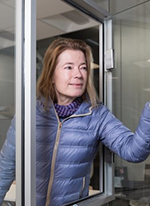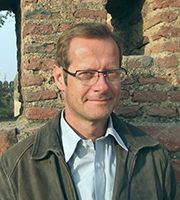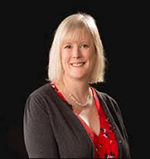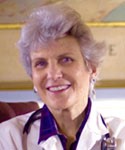Philomena Bluyssen
Professor of Indoor Environment, TU Delft

All You Need to Know about IEQ and the SenseLab
Research shows that, even when conditions comply with current standards for indoor environmental quality (IEQ), staying indoors is not good for our health. IEQ is described with quantitative dose-related indicators, expressed in numbers and/or ranges of numbers for each of the factors. Stressors and factors, whether of a psychological, physiological, personal, social or environmental nature, are rarely considered, let alone differences in needs and preferences of individual occupants. Lack of knowledge combined with improper use of available data hampers creating a healthy and comfortable indoor environment. There needs to be an integrated analysis approach for assessing indoor environmental quality, which takes account of the combined effects of positive and negative stress factors in buildings on people, interactions, the preferences and needs of occupants, and dynamics of the environment. The SenseLab has been created to facilitate the understanding of the indoor environment, and it allows students, teachers, researchers, and the general public to experience and test different combinations of environmental conditions.
Richard de Dear, Ph.D.
Director, Indoor Environmental Quality Laboratory, University of Sydney

20 Year Update on ASHRAE’s Adaptive Thermal Comfort Model
It’s been two decades since ASHRAE’s TC 2.1, Physiology and Human Environment, published its adaptive thermal comfort model (RP-884), which went on to become part of ASHRAE Standard 55 (Thermal Environmental Conditions for Human Occupancy) in 2004 and was adopted by standards-setting organizations around the world. A 2018 update and expansion of the RP-884 global thermal comfort database prompted a rigorous quality assurance exercise on the first-generation adaptive comfort standards. . Results from comfort questionnaire records validated ASHRAE Standard 55’s current adaptive comfort model for naturally ventilated premises. There was sufficient data to also develop a mixed mode adaptive model closely aligned to the naturally ventilated counterpart, contradicting ASHRAE 55’s current treatment of mixed mode buildings as the same as conventionally air-conditioned buildings. Adaptive comfort effects were observed universally in all regions represented in the 2018 global comfort database, but for comparable outdoor climates, the neutral temperatures in naturally ventilated and air-conditioned buildings in the Asian subset trended 1~2 °C higher than their Western counterpart.
Mariana Figuiero
Director of the Lighting Research Center, Rensselaer Polytechnic Institute

Overview of the Health Effects of Light in the Built Environment: More than Just Vision
Biological rhythms that repeat approximately every 24 hours are called circadian rhythms. Light-dark patterns on the retina help the circadian clock, and thus circadian rhythms, to synchronize with the 24-hour day. If lack of synchrony or circadian disruption occurs, we may experience decrements in physiological functions, neurobehavioral performance, and sleep. Lighting characteristics affecting the circadian system are different than those affecting vision, and yet, all lighting standards and metrics are based on visibility. Humans in the built environment are exposed to constant dim light, rather a robust light-dark pattern typically found outdoors. Data from laboratory investigating how circadian-effective light can improve sleep, mood and behavior in older adults with dementia, office workers, nightshift and dayshift nurses, cancer and patients and traumatic brain injury patients will be presented. This presentation will also discuss what lighting changes are needed in the built environment to promote health and well-being.
Dr. Benjamin Jones
Associate Professor, University of Nottingham

The Acceptability of Air Quality in Domestic Kitchens
Cooking food is a primary source of fine particulate matter (PM2.5), acrolein, and NO2 in non-smoking homes, which are associated with elevated risks of acute and chronic health effects. Health impact studies show that PM2.5 is the most dangerous indoor pollutant. However, complete source removal is not entirely possible, so the rate that cooking emits these pollutants, cooking and preparation methods, and ventilation strategies used in a domestic kitchen must be evaluated.
This talk will consider two methods for measuring uncertainty in cooking PM2.5 emission rates and use them to evaluate three ventilation strategies commonly used in domestic kitchens. It will show that using a cooker hood is the most effective ventilation strategy when used during and shortly after cooking. It intends to show that standards should be amended to incorporate required combinations of airflow rates and cooker hood capture efficiencies, and to consider methods of measuring cooker hood capture efficiency. Finally, it will show how simple changes to the way we cook can further minimize exposure to PM2.5.
Cath Noakes, PhD, FIMechE, FIHEEM
Professor of Environmental Engineering for Buildings, University of Leeds

Controlling Infection Risk through Healthcare
Design Transmission of infection is conventionally regarded as either a human behaviour or a medical challenge, yet the environment can also significantly influence this process. This is particularly the case for airborne transmission of infection, where the physical passage of microorganisms in the air depends on the airflow in building design, and their survival depends on environmental conditions.
This talk considers the engineering and modelling strategies that can be used to understand the mechanisms for airborne infection and to evaluate the effectiveness of design solutions. Examples from research studies demonstrate models of different types of hospital environments and assess the benefits and limitations of different strategies. This includes considering how to conduct quantitative assessment of infection risk to supplement conventional engineering design analysis on physical aspects such as energy and comfort. The talk considers how research findings may be used to support practice, and where further research is needed to understand both fundamental processes and the real performance of engineering solutions.
Stephanie Taylor MD, M Architecture, CIC, FRSPH(UK), MCABE
Taylor Healthcare Consulting, Inc.

New Research Reveals the Power of Indoor Air Management to Improve Human Health
A perplexing and costly rise in infection and chronic disease challenges us to understand hidden factors at play. Understanding how the indoor environment influences acute and chronic diseases has lagged behind other research. However, with new genetic analysis tools, our understanding of indoor communities of viruses, bacteria, and fungal organisms improves rapidly. We are learning that indoor air management in mechanically ventilated buildings selects the bacteria and viruses that cause disease, while simultaneously weakening the human immune system. While alarming, this also reveals a new, powerful strategy to curtail viral and bacterial epidemics.
Studying this intersection of buildings, indoor microbes and humans has become an urgent topic for all of us. Hospitalized patients are at serious risk of new infections from antibiotic-resistant bacteria. In addition, seasonal influenza, or even a viral pandemic, affects everyone who resides in buildings.
This address shows new research on how properly managed indoor air can suppress infectious microbes, support human immunity and enhance productivity and learning.